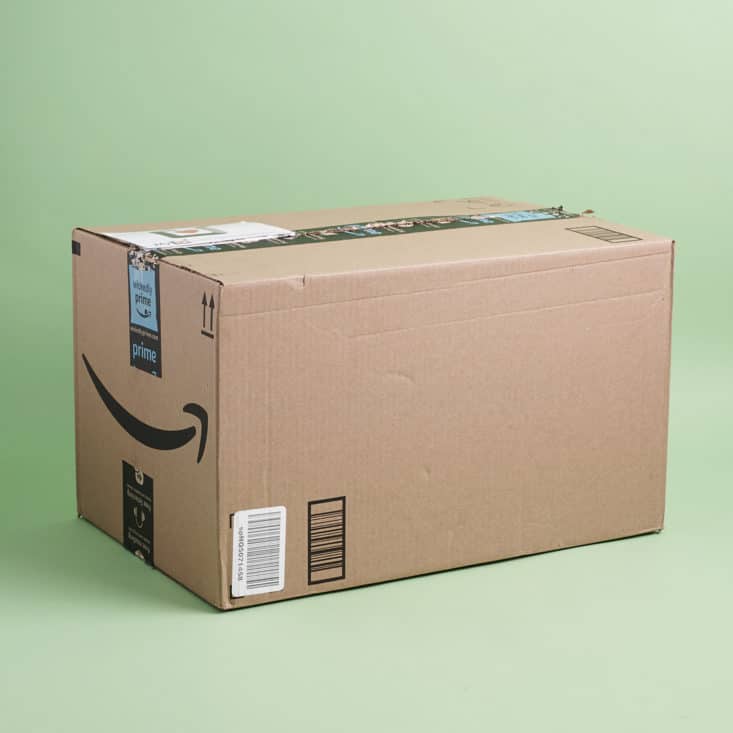
Amazon has launched a STEM Club Toy subscription box! This monthly subscription delivers "handpicked, high-quality Science, Technology, Engineering, and Math toys" to your door for $19.99/month.
We signed up for Amazon's STEM Toy Club subscription as soon as it launched, and this is our sixth delivery, which arrived at the very end of June. Unlike the Amazon Prime Surprise Sweets box, this is packaged very simply - it looks like any other shipment from Amazon.
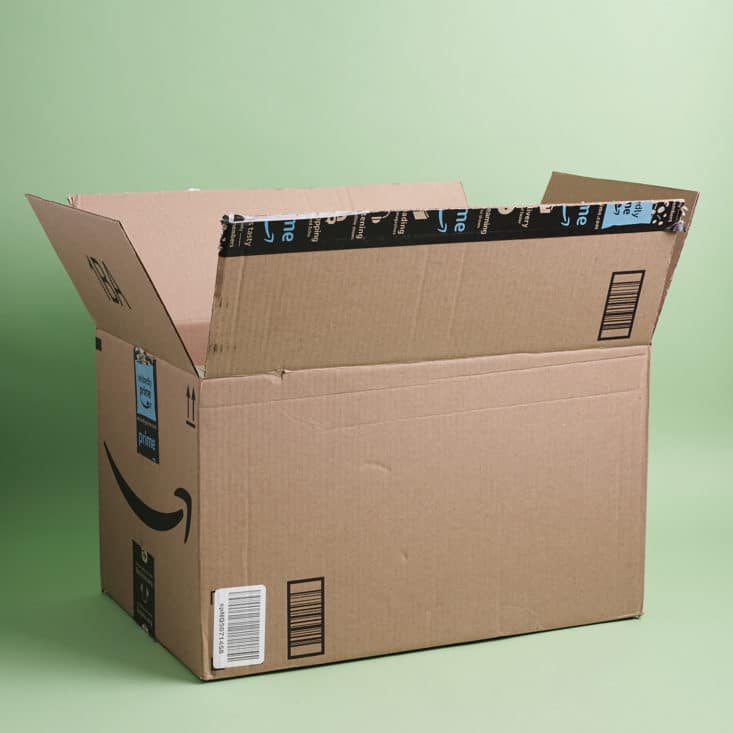
There are 3 age range options:
- 3-4-year-olds (counting, building, and cause and effect)
- 5-7 year-olds (hands-on experiments and explorations of electricity, earth science, and simple math)
- 8-13-year-olds (more complex projects and experiments based on principals of physics, chemistry, and engineering)
My Subscription Addiction paid for this box. (Check out the review process post to learn more about how we review boxes.)
This is a review of the 3-4-year-old age range Amazon STEM Club, $19.99/month.
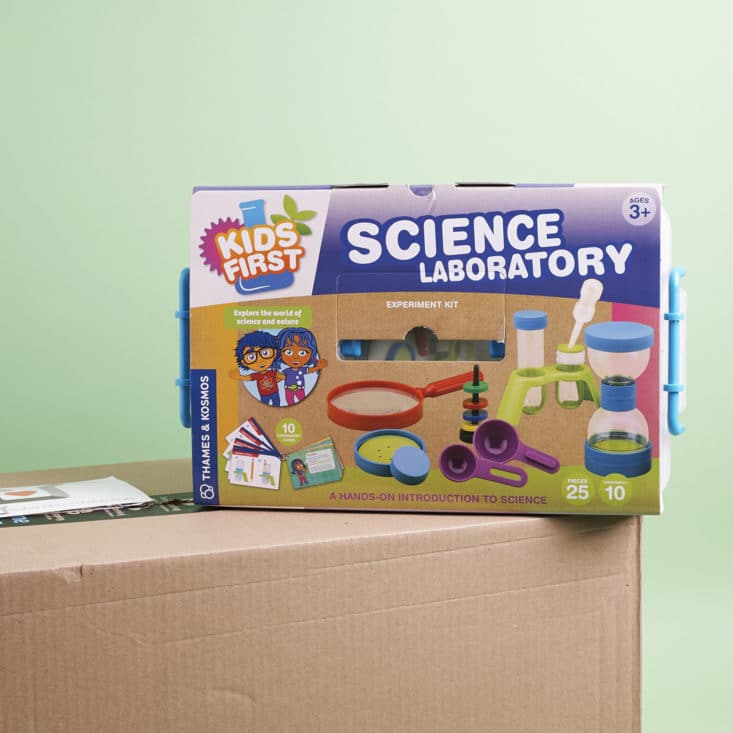
The Subscription Box: Amazon STEM Toy Club
The Cost: $19.99 per month
The Products: Each month you will receive a different, age-appropriate STEM toy.
Ships to: U.S. (free shipping)
Check out all of our Amazon STEM Toy Club reviews, more educational and STEM subscriptions for kids, and all Amazon subscription boxes in our subscription box directory!
Keep track of your subscriptions: Add this box to your subscription list or wish list!
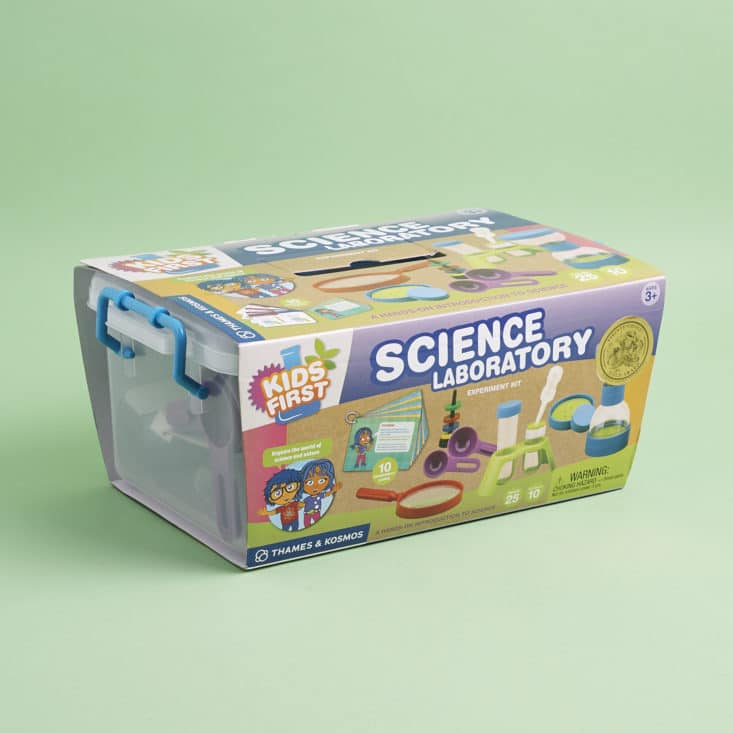
Science Laboratory Experiment Kit by Kids First - Value $36.50
This month's selection is a science experiment kit designed for ages 3+! I love it!
Most of the kits we've received in this subscription have been more math and engineering based, so it's great to see something that is focused on the natural sciences.
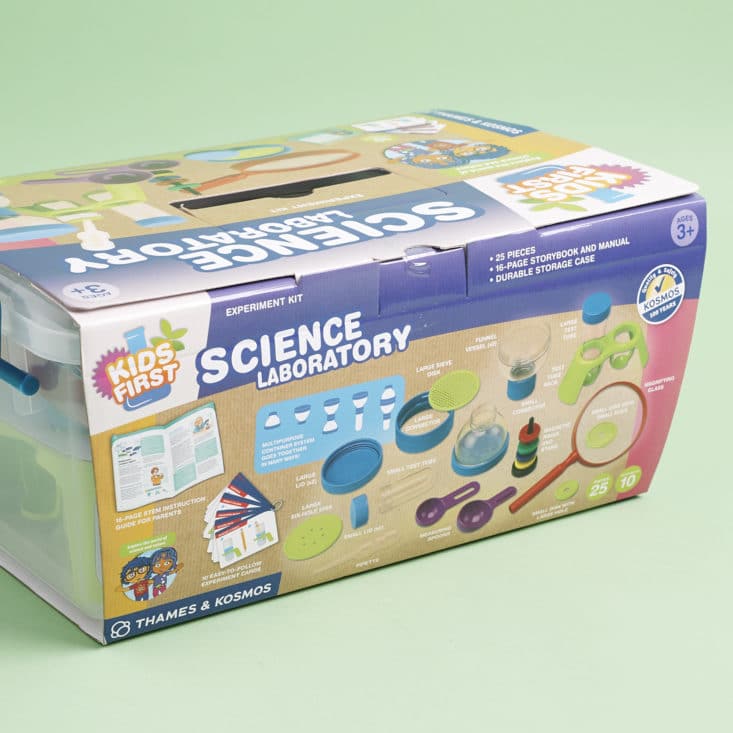
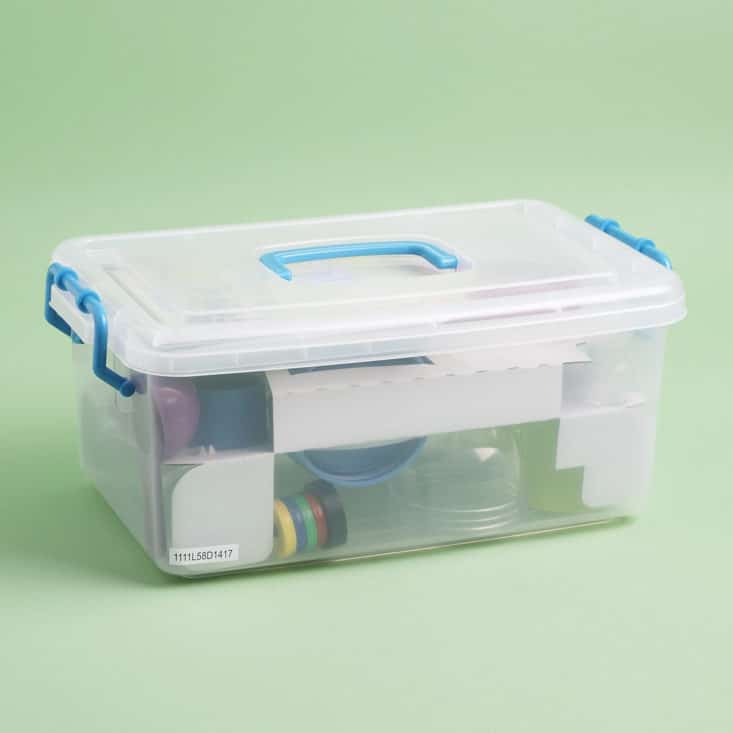
This is our second kit from Kids First/Thames & Kosmos in this subscription, and I have to say: they have the BEST packaging. It's so easy to pack everything back up for storage when you're doing playing. This is a huge win for me in the battle against the never-ending clutter that is childhood. 😉
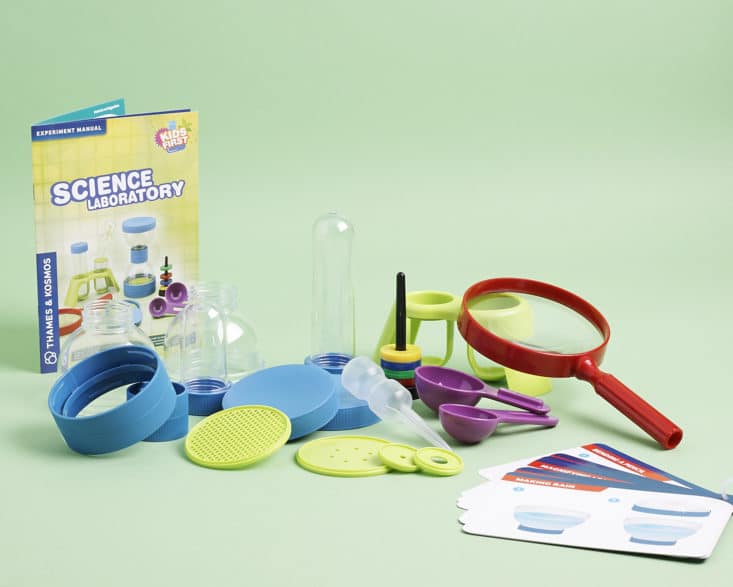
This kit has 25 pieces, but it doesn't feel overwhelming like some toys with lots of tiny pieces can be. Some of the parts are interchangeable: the caps for the beakers can also be used on the funnel shapes for example. Everything is made from a nice solid plastic and feels like it will last through a lot of play.
There are two booklets included. The first is an experiment manual for parents:
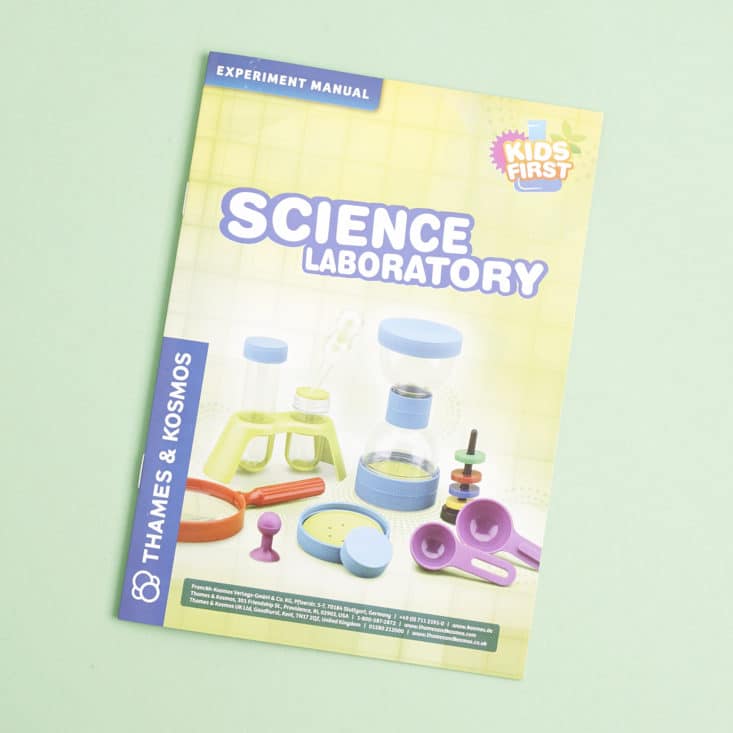
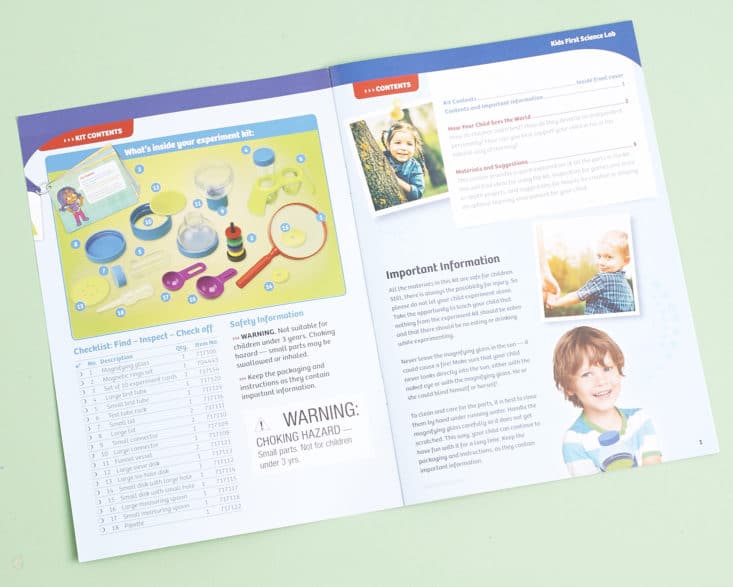
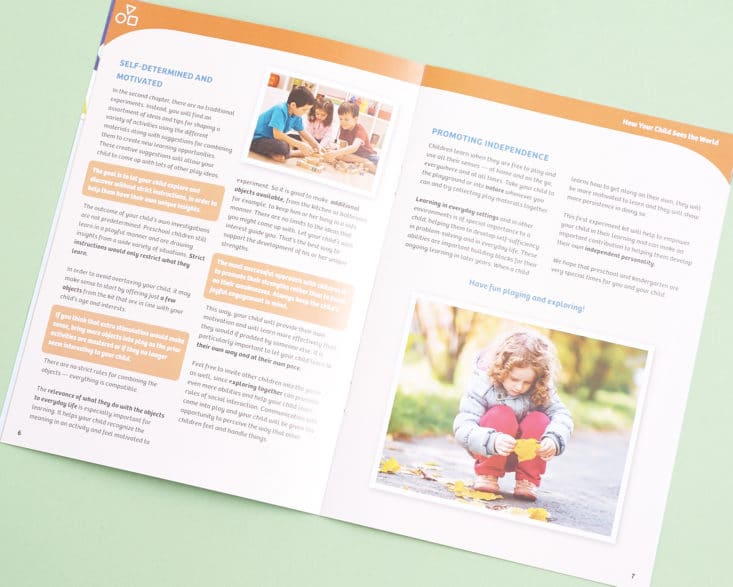
This guides you through not only the pieces included with some ideas on what to do with them but also helpful tips on independent play and exploration.
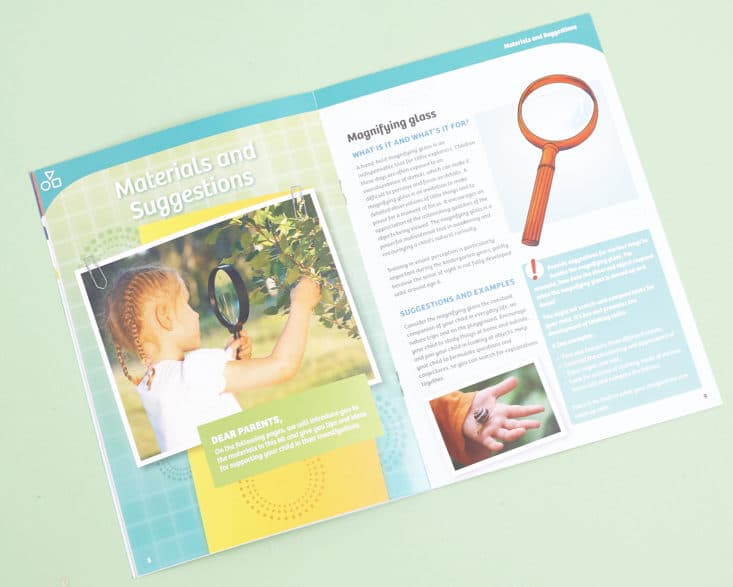
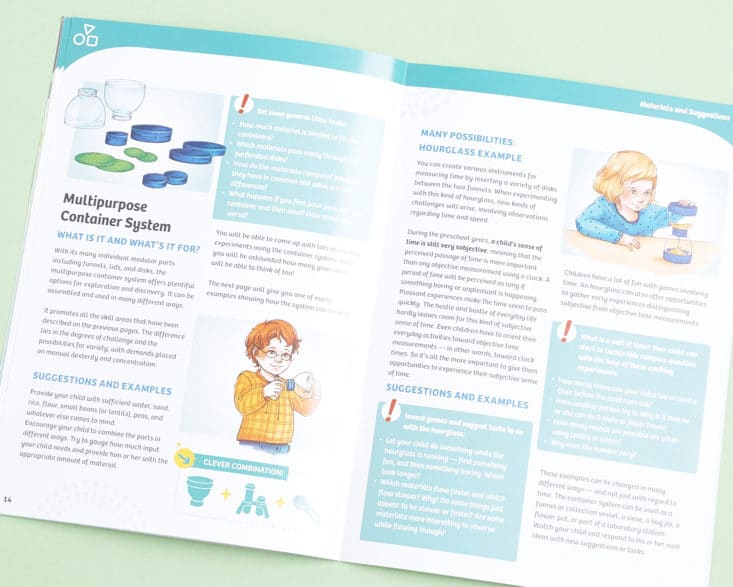
This shows parents in more detail how the various parts go together for each experiment, too.
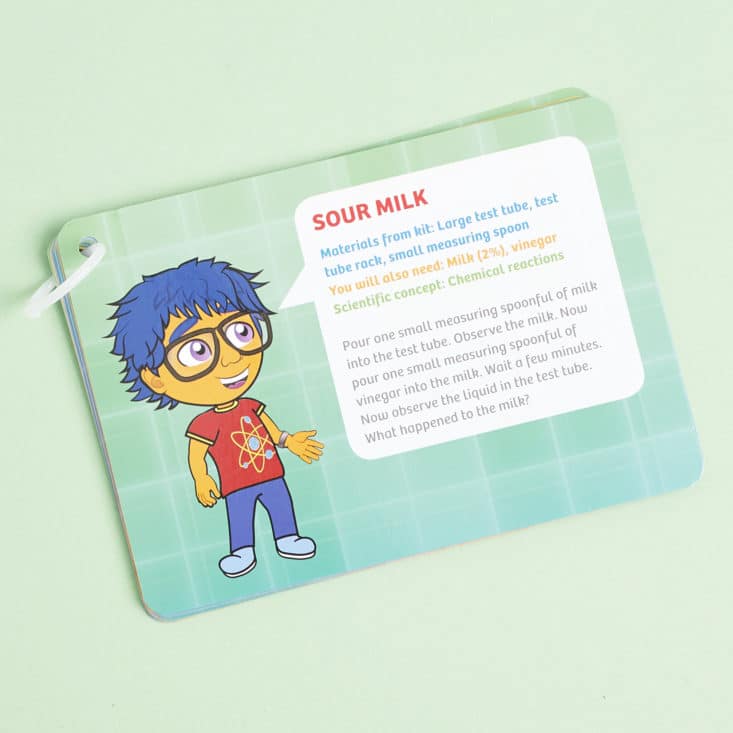
The thick, glossy experiment cards are held together with a plastic ring and have shorter and more concise instructions for each project. They list out which materials you need from the kit, what you need from home, and which scientific concepts you'll be exploring.
I flipped through all 10 cards, and I had all of the materials readily available in our home and kitchen except for one (sand). I love it when these projects are simple and don't require a trip to the store, so that is a big win for me! It means we can break this out whenever we have a rainy day and need some entertainment, without having to make a trip to the store.
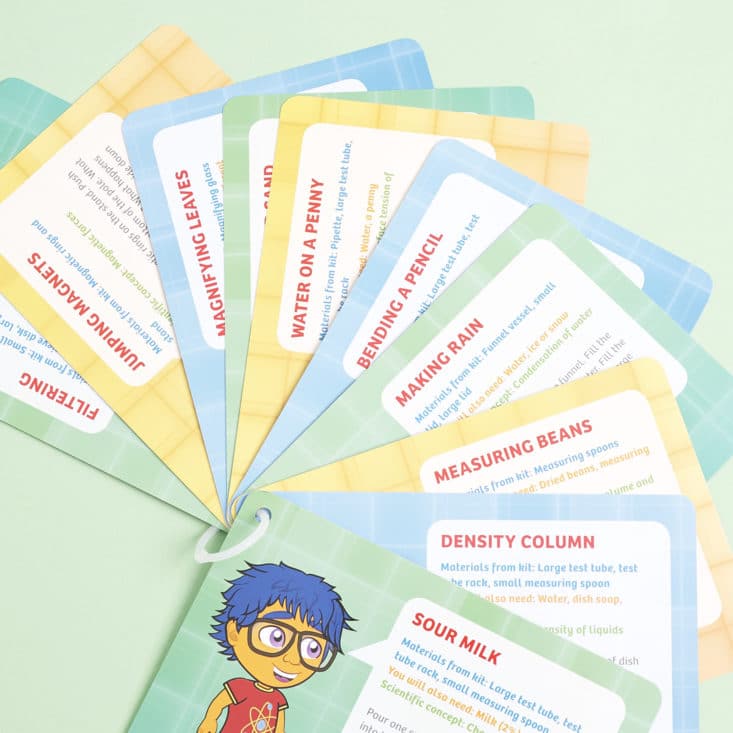
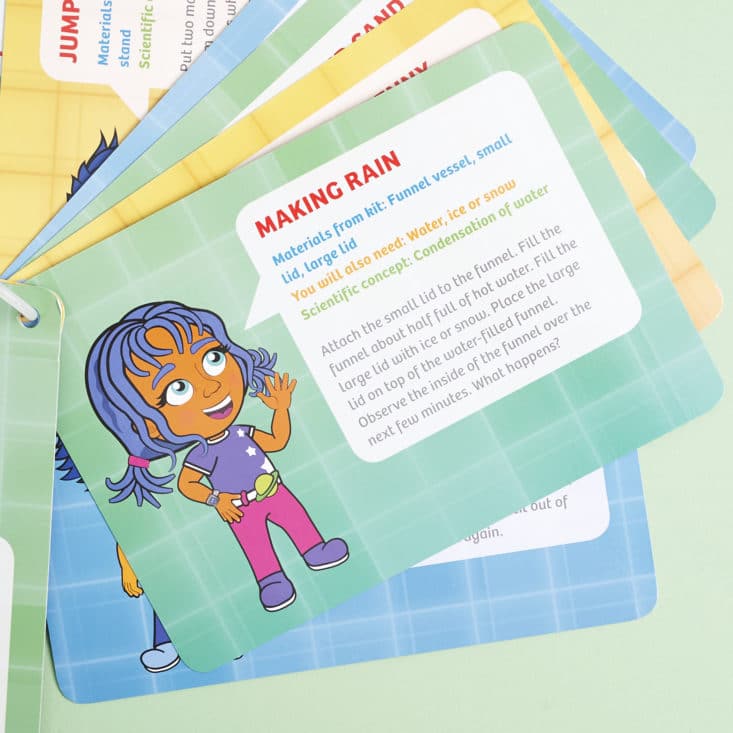
These are really simple and accessible projects that are definitely suitable for the 3-4 age range; no exploding volcanoes or other super involved projects here! I really like how these concepts have been distilled down so simply.
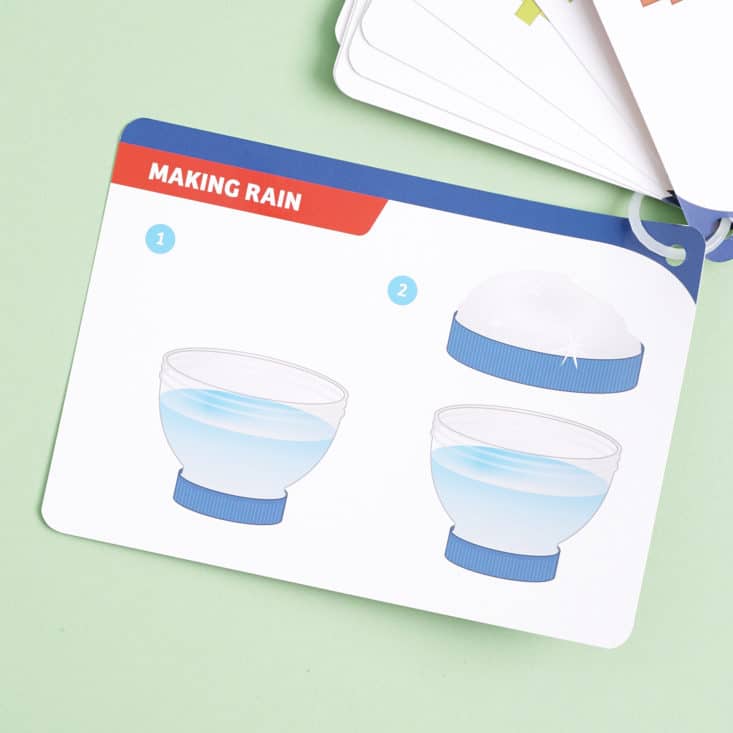
The back shows a simple illustration of the pieces you need and how they should fit together.
Here are all the components included:
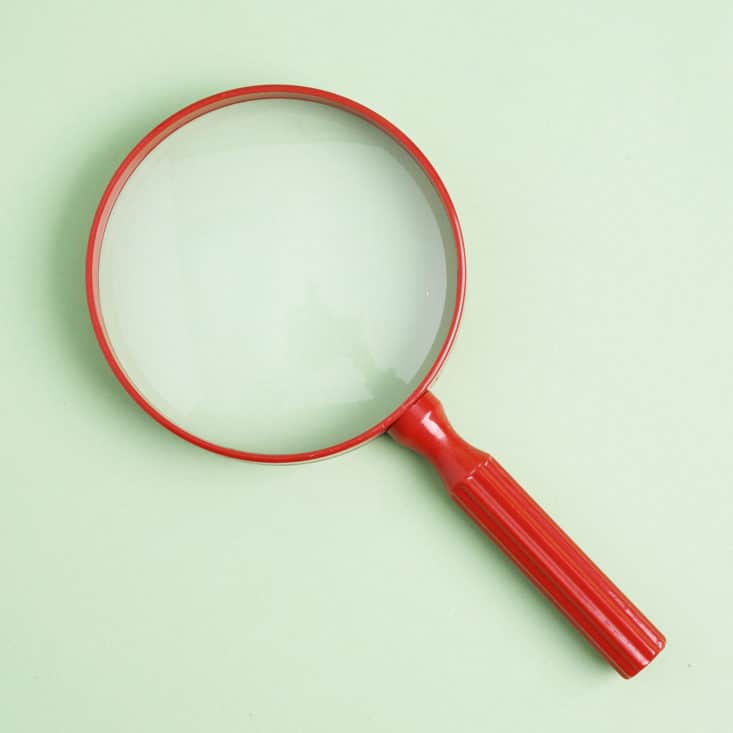
Magnifying Glass
I love these! We have one from our first Little Hiker box too, and they're so much fun to explore outside with.
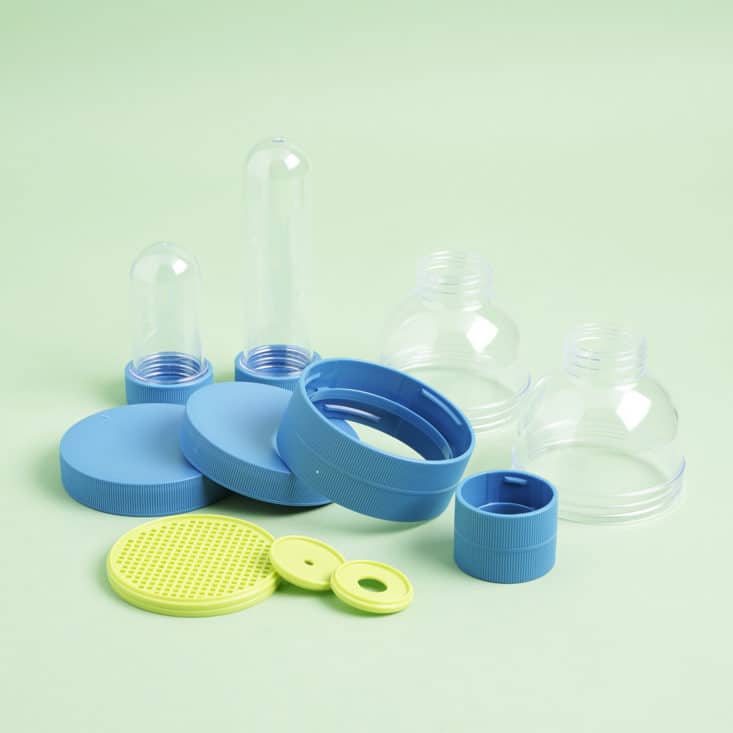
Multipurpose Container System
These funnels and beakers can be configured into a few different containers and shapes, including an hourglass!
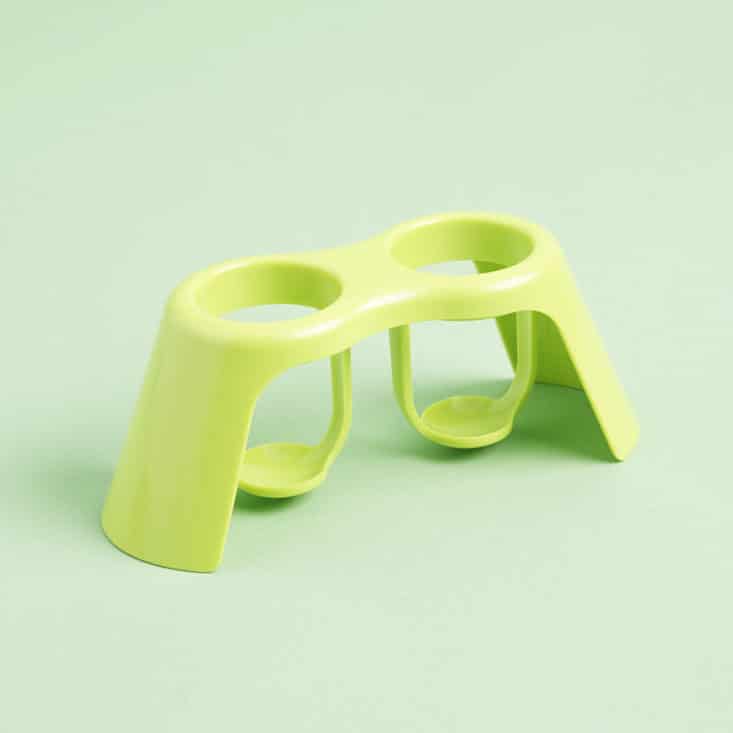
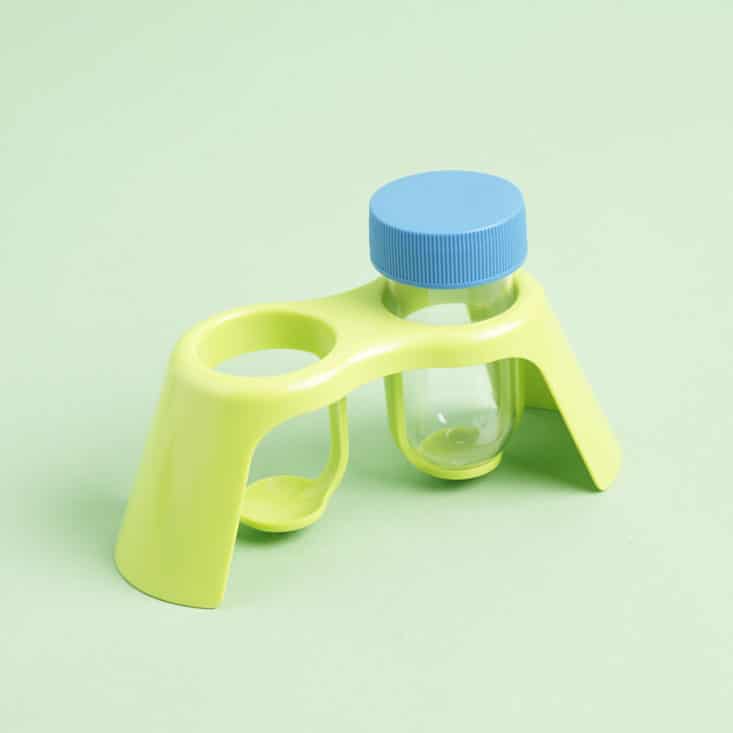
There is also a holder for your beakers, to keep everything upright while performing liquid based experiments.
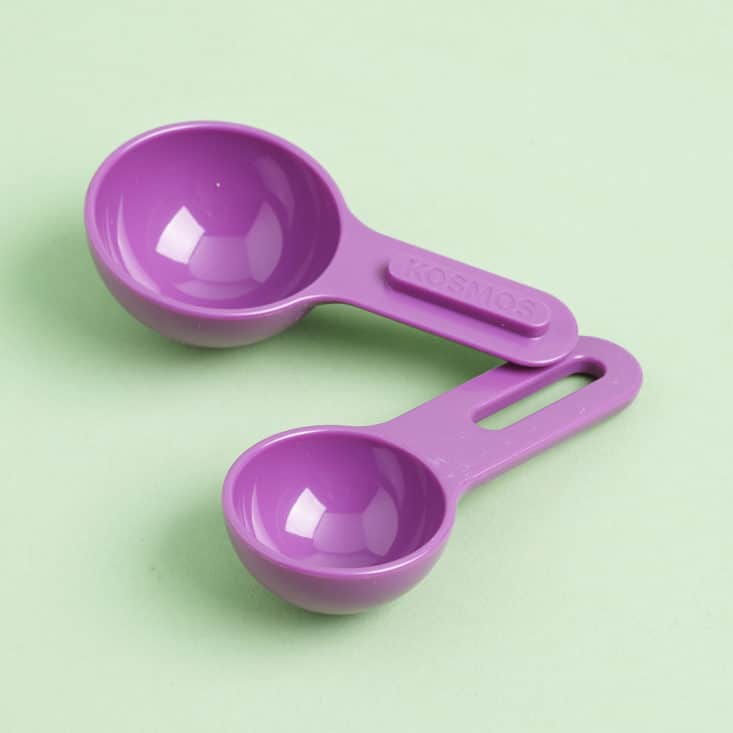
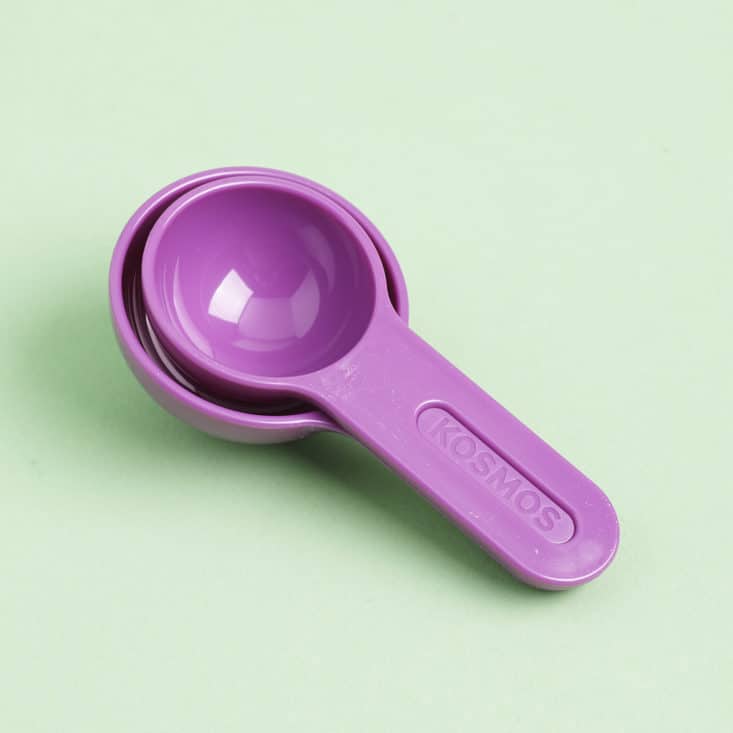
A couple of simple measuring spoons.
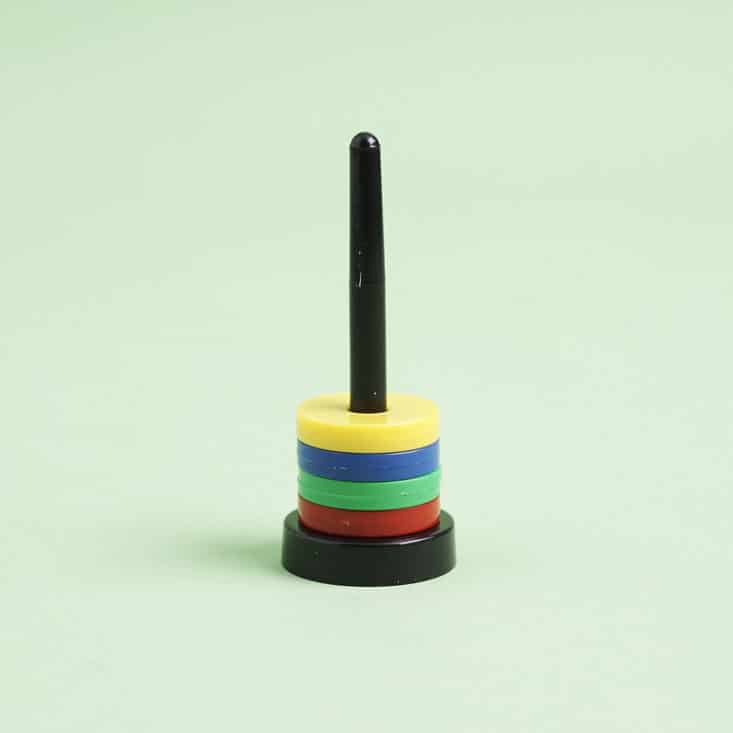
A set of magnets with a stand. The stand also has a magnet built into the base.
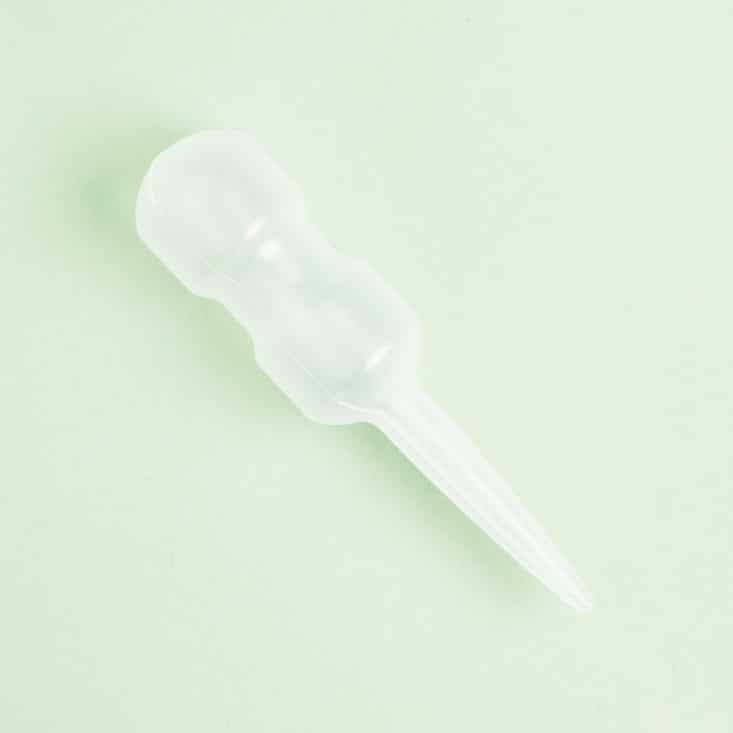
Finally, a simple pipette.
My son is on the younger side of 2, so he doesn't have the longest attention span. I decided to test out one of the non-messy projects first since it didn't require any additional pieces: jumping magnets!
I showed him the stack of magnets on the black stand and then showed him how they elevate and bounce if you turn them over. He got the concept pretty quickly:

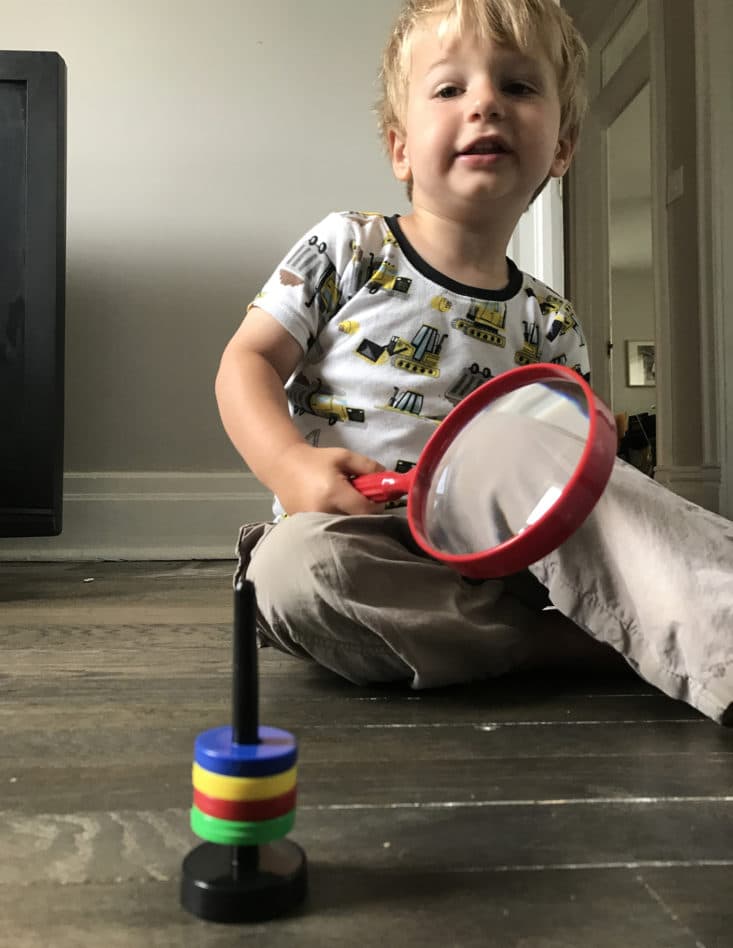
We also spent a good 10 minutes using magnetic forces to push and pull magnets around on the floor, which he thought was absolutely hilarious. I'm looking forward to showing him the other magnet experiment soon, where you bury metal objects in sand and use the magnets to sort them out. In the meantime, though, we're headed to the park with our magnifying glass in tow!
Verdict: Another win for Amazon's STEM Toy Club this month! I love the focus on natural sciences this time, and it's something we will definitely have a lot of fun exploring and playing with together. I appreciate that the toy is well made and has a lot of opportunity for free play as well as structured experiment-based learning. I wouldn't really think of introducing a two-year-old to concepts like density of liquids or light refraction, so I love that this kit pushes me in that direction! And, it's another good value in terms of the retail price (the toy is $16 over the price of the subscription).
What do you think of this month's toy from the Amazon STEM Club Toy subscription box?





Please do not enter your email address in the Name field or in the comment content. Your email address will not be published. Required fields are marked *. Remember to post with kindness and respect. Comments with offensive language, cruelness to others, etc will not be approved. See our full comment policy here.